
Now 10% off all Ergolash lashing straps save now! Voucher code: ergo10 | Valid until 31.05.2025
Many people may remember the TV shows in which as many dominoes as possible were set up without falling over in order to set new records.
The domino effect is a damage pattern that occurs as a result of full braking of a truck with certain loads. Today’s LaSi blog deals with the causes and the measures that can be taken to avoid or prevent them.
In the graphics, the braking direction is always assumed to be to the left.
A load that is stowed with gaps or because the gaps result from poorly packed load units will always cause problems. In the event of emergency braking, the gaps will close as far as possible and the load will tilt in the direction of braking.
The tipping angle of the last pallets may be so large that they can no longer be unloaded easily.
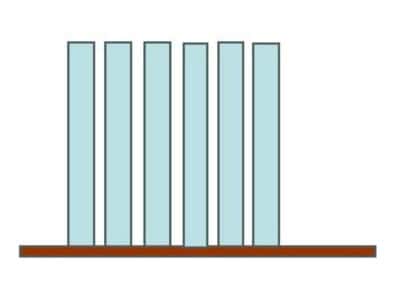
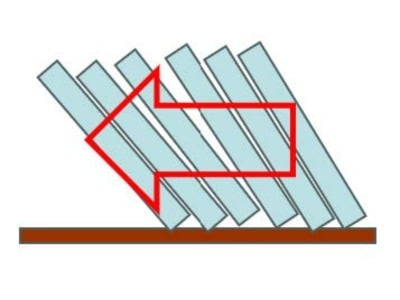
The situation can be nicely illustrated using the example of a load of barrels, although barrels are not the most critical cargo because they are inherently stable.
When braking, the gaps between the barrels condense and the pallets start to tip.
From the rear (rear side) to the front towards the bulkhead, or from right to left in the picture, the tipping angles become larger and larger and, depending on the situation, the last barrel pallet could also tip over.
This is always the case when the load unit’s center of gravity shifts over its tipping edge.
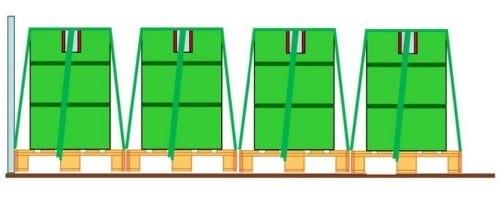
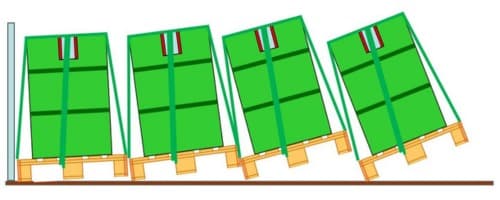
Loads that are unstable are more critical. In the example, the load unit consists of five layers of trays that are packed on the pallet in the column scheme and wrapped in film.
Due to the inadequate foiling, each tray behaves like a separate element with its own center of gravity and yields to acceleration as far as it can move.
In the picture you can see how the bond dissolves more and more from left to right.

Big bags have comparable properties because they often contain free-flowing material. The way in which the big bag is manufactured has a significant influence on transport stability.
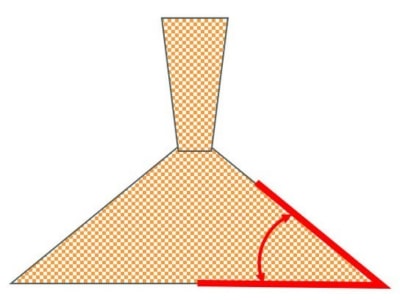
The angle of repose of the load is a decisive measure for assessing the situation. The flatter the angle of repose, the more critical the situation.
If you want to, you can clearly see the difference by tipping a cup of coffee beans and a cup of flour next to each other on the kitchen counter.
I assume no responsibility for the self-experiments.☺
The picture on the left clearly shows how very free-flowing cargo behaves during transportation. The domino effect can be clearly seen in the picture on the right. The big bags were tilted forward until all the gaps were closed.
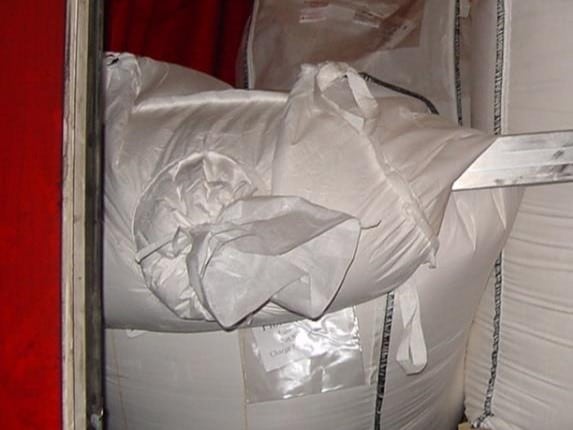


One solution would be: the more free-flowing the load, the more stable and smaller the big bags should be. It is better to stack two big bags on top of each other on a pallet than to use one large big bag.
Another solution would be to install intermediate fuses. Here again using the example of barrels.
Of course, this requires an appropriately load-bearing structure in accordance with Code XL and the availability of steel insertion battens and locking beams.
Depending on the load, an intermediate securing device should be fitted after every third of the loading area. Around three locking beams would be required for a complete load.
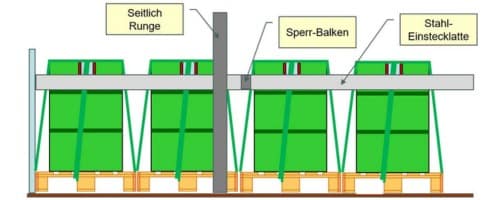
If the load is unstable, i.e. big bags, octabins, pallets with trays, etc., then it would be advisable to place pallets on edge in front of the locking beams so that the force is transmitted over one surface.
The vertical pallet on the left serves as a gap filler if the gaps between the load units are too large. The right-hand vertical pallet absorbs the force from the load as a surface and transfers it to the locking beam.
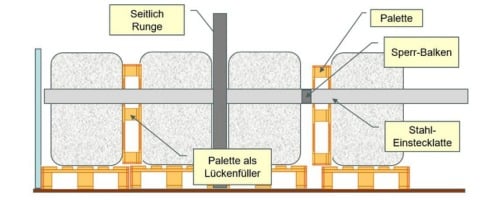
Octabins are often not stable enough to withstand acceleration during braking due to their design and quality. One of the reasons for this may be that the cover and base are of different material quality and their connection to the casing is either missing or too weak.
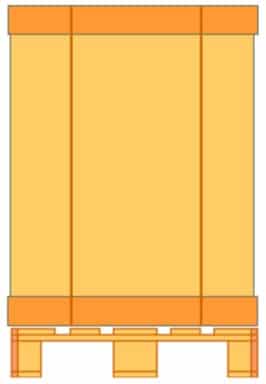

As long as the Octabin is only statically loaded/filled, it usually remains stable. Even transportation with industrial trucks can cause the structure to deform.
Depending on the acceleration force, the deformation is more or less large. When transporting by truck, it also depends on how large the gap between the Octabins is.
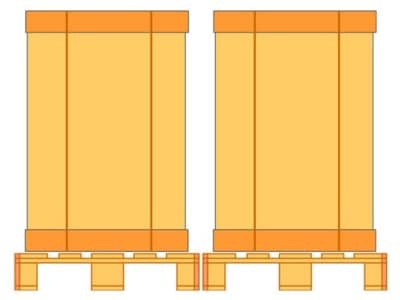

If gaps are then added, which occur because the octabins are smaller than the charge carriers, the whole situation becomes worse. Depending on the number of loading rows, it may be the case that the octabins can no longer be unloaded easily at the end of the load.
Here too, the only solution is to look for the intermediate fuses. If no locking beams are available, the intermediate securing could also be solved with head flashing.
In principle, head flashing also works with all other loads.

The reader will recognize that the problem of preventing the domino effect can be solved with the simplest of means. You just have to deal with the problem and organize the solution.
I wish all those affected the courage to tackle the matter.
Yours, Sigurd Ehringer
<< Previous article
Episode 39: Anti-slip mats Part 2: Avoiding application errors
Next post >>
Episode 41: The K-factor and safety factor

Sigurd Ehringer
✔ VDI-zertifizierter Ausbilder für Ladungssicherung ✔ Fachbuch-Autor ✔ 8 Jahre Projektmanager ✔ 12 Jahre bei der Bundeswehr (Kompaniechef) ✔ 20 Jahre Vertriebserfahrung ✔ seit 1996 Berater/Ausbilder in der Logistik ✔ 44 Jahre Ausbilder/Trainer in verschiedenen Bereichen —> In einer Reihe von Fachbeiträgen aus der Praxis, zu Themen rund um den Container und LKW, erhalten Sie Profiwissen aus erster Hand. Wie sichert man Ladung korrekt und was sind die Grundlagen der Ladungssicherung? Erarbeitet und vorgestellt werden sie von Sigurd Ehringer, Inhaber von SE-LogCon.
Rothschenk assortment
Our customer center has only one goal: to turn your problems into solutions. Whether standard stowage cushions, bestsellers or load securing personally tailored to your needs -. we accompany you consistently from A as in field service to Z as in certification. That is our promise to you, as a leader in our industry.
We attach great importance to professional cargo securing. That is why we have our own production, which ensures reliable operation through modern manufacturing technologies and strict quality control. Thus, we offer our customers a comprehensive and high-quality range of services in the field of transport logistics.
DIN ISO 9001:2015, EMAS and Ecovadis are not foreign words to you? Then it's time to work with the best.
You don't take any risks with us - we have been awarded the Platinum Medal on the EcoVadis sustainability rating platform.
As a load securement company, we are proud to have several certifications that validate our sustainability efforts and our commitment to environmental protection and social responsibility. For you as a purchaser, this means that we demand and promote the implementation of high environmental and social standards both within the company and along the supply chain.
You are currently viewing a placeholder content from Google Maps. To access the actual content, click the button below. Please note that doing so will share data with third-party providers.
More Information